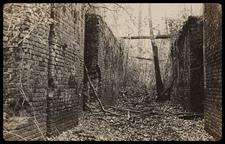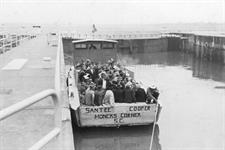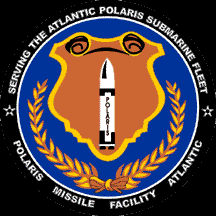The Changing Landscape
An agricultural depression crippled South Carolina throughout the 1920s, with a significant drop in cotton prices, the end of profitable rice production, and problems associated with the timber industry. Rural Berkeley County was particularly hard-hit by the agricultural downturn. One entrepreneur, Thomas C. Williams, had an idea to reestablish the Santee and Cooper Canal and through the drop in elevation between the former and the latter, build a modern hydroelectric plant. With the election of Franklin D. Roosevelt and the coming of the New Deal, this project became more important.
Simply the Best In Blackwater Diving
COOPER RIVER DIVE CHARTERS
Historic Resources of the Cooper River, ca. 1670-ca. 1950
The nearby navy base and shipyard expanded with some Works Progress Administration (WPA) and Public Works Administration (PWA) projects in the 1930s and the entry of the United States into World War II in 1941 brought a major expansion of all military-related facilities in the Cooper River and Charleston areas. Employment at the Charleston Navy Yard increased from 6,000 in 1941 to 28,000 in 1943 and another 72,000 workers found employment with private defense firms in the Charleston area.
This did not include the numerous servicemen stationed at the Base or other facilities. The need for housing greatly increased and impelled much new construction particularly in nearby North Charleston. After the war, however, with the expansion of the Naval Weapons station and its designation as a Polaris missile facility, Berkeley.(POMFLANT)



The organization of the South Carolina Public Service Authority and its extensive mission to develop inland navigation, reclaim swamps and reforest watersheds, impelled South Carolina politicians to lobby and gain approval from Roosevelt’s administration for the Santee Cooper Project. Construction began four years later on the largest New Deal effort undertaken in South Carolina and what was then the largest land-clearing project in the world, clearing most of the 193,000 acres of land acquired for the project. The Moderne-style Jefferies Hydroelectric Plant, on what became Lake Moultrie, was in operation by 1942. It not only assisted in powering war industry facilities in Charleston but brought electric power for the first time to many citizens of a state in which only 2% of the farms had electricity in the mid-1930s.67 The electric power and the flooding of so many former plantations had a distinct impact on the area, as did the change in water level in the former rice fields and along the banks, yet another alteration to the landscape of the Cooper River region.
On Jan. 13, 1942, the Pinopolis Lock at the Jefferies Hydroelectric Station near Moncks Corner was first operated. A tugboat and two barges were lifted 75 feet from the Tailrace Canal to Lake Moultrie
Remains of the Santee Canal
The Santee Canal was one of the earliest canals built in the United States. It was built to provide a direct water route between Charleston and Columbia, South Carolina.
On 3 November 1960, the USS George Washington (SSBN-598) steamed into Charleston, South Carolina, and tied up at Naval Ammunition Depot's Pier Bravo. At 5:15 p.m. that afternoon, the first tactical POLARIS A1 missile was loaded aboard the USS George Washington (SSBN-598) "without complications." By 7 November 1960, all 16 missiles were in the submarine's launch tubes, and the crew had begun initial checks of their newly-acquired "birds."
Historic Resources of the Cooper River, ca. 1670-ca. 1950
United States Department of the Interior
National Park Service
National Register of Historic Places
Simply the Best In Blackwater Diving
Copyright 2020
Cooper River Dive Charters
260 Amy Drive
Goose Creek, SC 29445
843-296-3344







